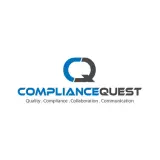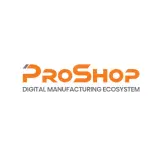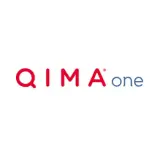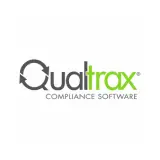- Free Version: Available for teams of up to 10
- Pricing: Premium plan $24/month (with a free 30-day trial period)
- Platforms supported: Available on mobile app (iOS and Android) or a web-based software
Why use SafetyCulture?
SafetyCulture is a comprehensive platform you can use for your PPAP processes. The app allows teams to take charge of their quality management processes with many features that work great for PPAP. With SafetyCulture, you can use PPAP checklists, manage documents, and boost productivity and efficiency.
Features:
- Use PPAP checklists and inspection templates for auditing production processes and submitting production part documents for approval
- Digitize the document management system via cloud-based solutions to boost efficiency and save on space
- Communicate production updates with the entire team through Heads Up to ensure the organization is on the same page
- Gather data and analytics on the PPAP process to find potential areas of improvement
- Check the quality of product parts, spot non-conformities, and assign the right people to address them
Why use ComplianceQuest?
ComplianceQuest is a Salesforce-powered platform that works great for managing PPAP. The platform allows you to ensure people follow both company and government standards while scaling it to your specific needs.
Features:
- PPAP automation
- Document control
- Supplier management analytics
- Free Version: None
- Pricing: Starts at $30 per user per month
- Platforms supported: Web, iOS, Android
Why use EHS Insight?
While primarily designed for EHS, this platform also works great for PPAP. The app gives you a centralized platform for compliance which the whole company follows. That way, managing product quality and the entire PPAP process is much easier.
Features:
- Compliance management
- Risk reduction
- Supplier management
- Automation
- Free Version: None
- Pricing: Starts at $3,600 per year
- Platforms supported: Web, iOS, Android
Why use QT9 QMS?
QT9 gives you full control of your products’ quality. The app makes it easier to track quality, productivity, and more, which are all very important when practicing PPAP. It also enables you to streamline various processes, greatly improving efficiency.
Features:
- Document control
- Non-conformance management
- Supplier management
- Reporting
- Free Version: None
- Pricing: Starts at $1,500 (With free 30-day trial)
- Platforms supported: Web, PC, iOS, Android
Why use ProShop ERP?
ProShop allows you to track different products and processes all in one place. As a centralized platform, it allows you to digitize document control and PPAP very easily. On top of that, it works for medium to large organizations, which is what makes this such a popular pick for various organizations.
Features:
- Data and analytics
- Downtime tracking
- Real-time monitoring
- Free Version: None
- Pricing: Custom pricing
- Platforms supported: Web, PC
Why use QIMAone?
QIMAone is one of the best software options for quality control available today. With various data management and analysis features, you can easily stay on top of your operations. It also has standardized and customizable workflows, which can save you a lot of time with your team.
Features:
- Failed inspection tracking
- Report templates
- Data and analytics with photos
- Free Version: None
- Pricing: Custom pricing (with free trial period)
- Platforms supported: Web
Why use Qualtrax?
Qualtrax is built for compliance management, but it still comes with various PPAP features that make it a great choice. With the app, you can stay organized, especially in a highly regulated industry. On top of that, it has automation capabilities and other features that can greatly streamline your PPAP process.
Features:
- Compliance reporting
- Document control
- Training management
- Free Version: None
- Pricing: Contact for pricing details (with a free trial period upon request)
- Platforms supported: Web, PC
What is PPAP Software?
PPAP software is a program you can use for the Production Part Approval Process (PPAP), which is a crucial step in manufacturing. This quality control process allows organizations to ensure that all their products meet quality standards. Since PPAP covers a lot of different aspects of production, it can be tough for organizations to stay on top of their processes. With the right software, it becomes much easier to streamline the entire production process from the ground up.
Importance
For manufacturing organizations of all sizes, it’s important to use all the tools available to simplify manual processes and boost efficiency. However, the approval procedure during production can eat up a lot of time for your company, especially when documents and approvals are processed manually. This can be resolved with the help of PPAP tools, including software programs.
If you have digital software for this process, you’ll find that receiving, creating, and approving documents becomes much easier. You no longer need to wait long hours to get documents approved, as they can be electronically signed using any device. Moreover, these records are automatically stored online in a centralized hub that you can access anytime, anywhere. This way, there’s less risk of losing or misplacing them than paper-based forms.
So, if you’re looking to promote your organization’s productivity and efficiency, you may need to invest in PPAP software.
Key Features
When selecting PPAP software, it’s best to refer back to your organization’s needs and preferences, especially the ones unique to your industry. That said, there are also a few key features necessary, regardless of your industry. Some of these features include:
- Document management
- Building workflows
- Compliance management
- Product tracking
- Collaboration tools
- Data and analytics
Choosing the Right Software
The list above is curated to feature the best software options available. That said, you may be in a pinch and need a quick comparison of the different options. If so, here’s a brief breakdown of the different software featured above:
| PPAP Software | Free Version | Paid Plan | Mobile App |
| SafetyCulture | Yes | $24/user/month* | Yes |
| ComplianceQuest | No | $30/month | Yes |
| EHSInsight | No | $3,600/year | Yes |
| QT9 QMS | No | $1,500 | Yes |
| ProShop | No | Custom pricing | No |
| QIMAone | No | Custom pricing | No |
| Qualtrax | No | Custom pricing | No |
* billed annually







